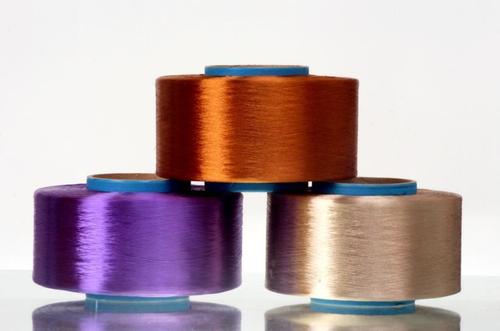The difference between civilian and industrial use of nylon fiber
Nylon, also known as nylon, is the third largest synthetic fiber in China, and its wear resistance is strong among all natural and chemical fibers. The appearance can be divided into short fibers and long fibers, and can be classified into civilian and industrial use according to their properties. 70% of enterprises in the nylon industry produce civilian silk, while 30% of enterprises produce industrial spinning.
Nylon fiber industrial yarn has higher strength than civilian yarn, mainly used for curtain fabrics, water fabrics, industrial cables, fishing nets, conveyor belts, etc. It can also be used as automotive airbag yarn, etc. The focus of industrial use is on industrial characteristics such as safety, wear resistance, and tensile strength; Civilian silk is mainly used in the civilian textile industry to make sportswear, tents, stockings, clothing fabrics, etc. It focuses on dyeing and blending comfort, and seeks more on the structural aspects of silk.

The development prospects of nylon in the civilian field continue to be widely optimistic, and its products are mainly used in the following two aspects:
1、 The use in the field of knitting. The sock industry is divided into two categories based on the type of socks worn: cotton socks and silk socks. Cotton socks are usually made by interweaving cotton yarn or blended wool, acrylic, silk and other raw materials with nylon. The raw materials used for silk socks are nylon straight yarn, elastic yarn or its core spun yarn.
2、 In the field of machine weaving. Nylon is mainly used in woven fabrics such as lining silk, umbrella cloth, and clothing fabrics. Nylon fiber has always been the main raw material for umbrella cloth. After coating processing and functional finishing such as waterproof, flame-retardant, breathable, and plasma treatment, its fabric has been widely used in the production of jackets, ski shirts, swimwear, casual wear, workwear, and sportswear.
Article source: Nylon colored yarn
-
05-27
The reason why fabrics containing spandex are prone to yellowing
Spandex is a commonly used fiber variety in our daily lives, characterized by good elasticity, low fineness, high elastic modulus (cracking elongation can reach 400-800), and low specific gravity. Spa
-
04-24
Colored non dyed nylon with synthetic fiber raw material
The current conventional fiber coloring mostly uses yarn dyeing method, which has long process, high loss, high cost, and the product has color difference and low color wash fastness. Yarn is prone to
-
03-26
What are the characteristics of non dyed spandex?
Non dyed spandex has also been widely used in recent years. Non dyed spandex fiber can be blended with fibers such as nylon, polyester, acrylic, cotton, wool, etc., which can give fabrics excellent el
-
02-24
The influence of yarn structure on fabrics
The basic characteristics of yarn include its appearance and shape, twisting characteristics, fiber transfer and distribution characteristics in the yarn, as well as the surface fuzz and internal loos
